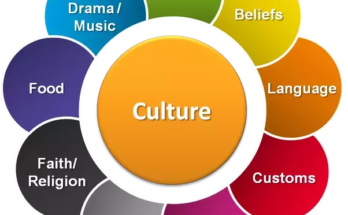The antiquity of Paris, its exotic landscapes and monumental gothic cathedrals that flourished during the epochal renaissance in Europe, made it the irresistible epicentre of tourism for decades, but the unfortunate onslaught of Jihadi terror attacks, inspired by the defamed Baghdadi led Islamic State IS, in the last couple of years, targeting centres of culture and other secular edifices, blighted the allure of the once pristine city.
This was not helped by the unhealthy and violent protests that were orchestrated by the ideologically driven vanguards of Yellow Vests between late 2018 and 2019; which led to needless casualties, thereby tarnishing the enviable human rights credentials of France, as the bulwark of freedom in the civilized world.
Moreover, the unfortunate fire incident at Notre Dame cathedral in 2019, nearly ruined that majestic edifice, which has been rightly ascribed as: ‘the heritage of humankind.’ The custodians of the heritage of humankind from all over the world, walked shoulder to shoulder with French men and women, to foil that threat to our common heritage.
No doubt, the serial setback, occasioned by terror and misfortune, has taken its toll on this magnificent city. It is, however, debatable, whether Paris would reclaim its hitherto enviable pride of place in the world of culture and tourism, in the foreseeable future. There is, however, a subtle shift to other European countries by aficionados of culture and tourism; and Scotland is one of such indisputable tourist destinations.
Despite security challenges in some parts of United Kingdom of Great Britain and Northern Ireland, notably London and Manchester, Scotland is, surreptitiously burnishing its accoutrements of culture, and can now lay claim to being one of the most besotted centres of culture, enlightenment and sporting events in Europe. The iconic SSE Hydro and SEC Armadillo, apart from being architectural showpieces, have played host to uncommon performances by a litany of the world’s greatest megastars, virtuosos and highly regarded Symphony Orchestra; yielding millions of hard currencies in revenue to the coffers of Scottish Government in Holyrood. Therefore, the recent declaration by European Commission that Glasgow is the ‘cultural and creative capital’ of United Kingdom, was never a surprise to well informed culture enthusiasts, as attested by Bridget McConnel, chair of Glasgow life, in her well measured reaction to the declaration by the European Commission.
This ancient city, which has nurtured cultural and racial diversity for centuries, expectedly, beat other UK cities like London, Manchester, Bristol and Brighton in the pecking order in the 2019 Cultural and Creative Cities monitor. It is axiomatic that some of the Laureates of prestigious awards in Arts, especially the Turner Prize, reportedly passed through top rate Glasgow schools. There are reputable arts performing troupe and cultural ensemble in Glasgow; such as Scottish Symphony Orchestra, National Theatre of Scotland, Royal Scottish National Orchestra, among others. It is not by happenstance that Glasgow was selected to host, arguably, the world’s largest conference on climate change in November 2020; precisely at the Scottish Events Campus, (aka as Scottish Exhibition Centre). Unfortunately, the outbreak of Covid-19, led to the cancellation of the high-profile conference. The location of prominent hotels within and around the Exhibition way, would have effectively eased the burden of logistics challenges, as the conferees would probably have been accommodated in the choice hotels that overlook River Clyde.
It is a fitting tribute to its awesome civilization that Edinburgh, the serene and impeccably clean capital of Scotland, was named by the same European Commission in its report, as the ‘best UK city for cultural venue and facilities’.
The earth-shaking Edinburgh international book festival that was held between August 10-23, 2019, attracted literary giants from all over the globe. Notable writers that were billed to attend the event included Booker award winning authors like Salman Rushdie and Ben Okri. It was a celebration of the written word; the rendition of epic poetry, and an avenue of cross-fertilizing ideas for multiculturalism and globalisation; a justification of the awesome literary projects that were nurtured by the Scottish Arts Council and Scottish Book Trust.
The shadows of the Scottish National bard, Robert Burns, must have loomed large during the book festival, although his literary accomplishments are celebrated annually, on January 25. Burns’ Night is not just about the celebration of the epic poetry of the bard; it is also about the celebration of Scottish traditional recipe, which has been commercialized by retail outfits.
Brexit, which the Scottish people voted, wholeheartedly against, in the referendum in 2016, is likely to affect the healthy ties the Scottish Arts world had with the European Union, following the cessation of UK’s membership of the union on January 31, 2020.

Beholding the mythical and mythological Edinburgh Castle at night is one of the most enchanting experiences anyone would relish in the world, especially during the annual ritual, heralding Hogmanay festival. Its attraction to tourists, notably from Asia, Latin America, and other Third World Countries, is phenomenal.
The Giles Cathedral; Palace of Holyrood house; the official residence of the Queen of Scotland; Canongate graveyard; the Blair Street underground Vaults which reminds one of the catacombs in ancient Rome, and other outstanding cultural sites and monuments, too numerous to mention, underlined the rich cultural heritage of the Scottish people. A tour guide booklet described the Vaults, as ‘an unsettling introduction to our unsavoury past.’ These exotic monuments in Edinburgh are on the same cultural pedestal as the artefacts of ancient civilizations of Egypt, Mesopotamia, Greece, Roman Empire and Babylon.
Surely, discerning epicureans and connoisseurs that have relished the scenic beauty of Scotland; its lavish cuisine and culture; islands, isles and islets; sights and sounds; zoological and botanic gardens; waterways, beaches, coasts, shores and shorelines, would be tempted to rephrase the popular mantra, probably minted by self-satisfied hedonists: ‘See Paris and die,’ to ‘See Scotland and live.’
Indeed, it is not hyperbolic to surmise that devotees of culture that had truly assimilated the rich ‘sights and sounds’ of Scotland, would yearn to live much longer in order to have another opportunity for a repeat visit in future. Scotland is among the few countries one would visit, repeatedly, without getting bored; its landscapes are surreal.
The galleries, exotic museums and cultural monuments in Edinburgh, Glasgow and other historical cities in Scotland like Loch Lomond and Dundee, are in the same class, as the enchanting Louvre Museum in Paris, France, which houses some of the greatest paintings in the world like the ‘Monalisa’ a 16th century painting by Leonardo Da Vinci and ‘John the Baptist’ another 16th century masterpiece created by the same artist.
The Scots are polished and cultured, and always troop to the theatres and cinemas in their thousands to savour well distilled arts performances and cinematic vignettes. The IrnBru carnival, which marked its centenary celebration in 2019, is reputed to be the ‘largest indoor carnival in Europe.’
The meticulously organized carnival which had all the trappings of Disney Land in Chessy, east of the centre of Paris, and Drayton Manor Park in Tamworth, Staffordshire, witnessed record attendance in the last decade, peaking in 2018 and 2019, respectively, as endless sea of fun seekers, basking in the euphoria of Yuletide, stretched the organizational skills of the organizers to the limits.
Of course, the Scots are very welcoming to immigrants, as declared by the amiable but highly principled First Minister, Nicola Sturgeon, sometime in 2019. However, like every human race, the Scots have their fair share of the ‘good, the bad and the ugly,’ (apologies to Clint Eastwood).
Travelling to any part of Scotland by rail, and dutifully assimilating her breath-taking mountainous landscapes, greenery, forest reserves, vast golf courses and aquatic habitats is the most awe-inspiring experience any tourist would relish.
The magnificent Emirates Arena, which is located at Glasgow East end, is one of the most modern and sophisticated sporting venues in the world, ‘boasting first class facilities and equipment.’ It has repeatedly hosted top rate European sporting events and tournaments; ranging from cycling, dart, basketball, badminton, netball, boxing, track and field events.
Like typical Europeans, the Scots are emotionally attached to their respective favourite local football club sides. Curiously, the Scottish national teams, do not enjoy such awesome following as the local club sides, with the result that the Hampden Park-the national venue for football tournaments- is never filled to capacity when the national teams are playing against their opponents in European championship qualifiers.
The atmosphere at Celtic Park, (Celtics football club) Ibrox, (Rangers Football Club) Easter Road, (Hibernian Football Club) Tyne Castle, (Hearts Football Club) and Pittodrie, (Aberdeen Football Club) during Scottish premiership football league matches, are better seen than imagined. Only the atmosphere at Liverpool’s Anfield, in the English premiership, could compare favourably to the magical atmosphere at Celtic Park and Ibrox, during big games in the entire UK. In fact, a recent survey by France Football poll, listed Celtic’s Park, as the fifth ‘best atmosphere in world football.’

The criteria used to conduct the survey were: ‘atmosphere and passion generated by the supporters who fill the stands.’
The passions of the football fans are indescribable, as exemplified by the outpouring of emotions at the demise in 2019, of a Celtic icon; one of the ‘Lisbon Lions’ that won the European Cup in 1967, Billy McNeill. His statue, which was erected in 2015 at Celtic park, was converted to a shrine, and adorned with Celtic traditional green scarfs, banners and flags.
The same scenario played out when a former Rangers player and legend, Fernando Ricksen, died at the age of 43, after battling with motor neurone disease in the same year, as McNeill. Ibrox stadium became a sea of blue scarfs, as thousands of grieving Rangers fans poured into the streets to pay tribute to the legend.
The spell binding and entrancing chants by the supporters of the two greatest clubs in Scotland; Rangers and Celtic, electrify the atmosphere and cause trepidation within the hallowed chambers of security circles. Listening to the blue sea of ibrox, we are the people, the bouncy, you will never walk alone, Grace, Hampden in the sun, just can’t get enough, come on you boys in green, and evenHibernian’s Sunshine on Leith, glory, glory to the Hibees, can hypnotise poets and inspire them to write epic poetry.
To stem the tide of violence at derby involving the Old firm clubs, the seating arrangements are usually, segregated between the two bitter rivals, and the roads are closed by security forces to avoid skirmishes and bloodshed after the tournament.
Only the famed Spanish El Classico football tournament, between arch-rivals, the Catalan giant, Barcelona and Real Madrid, would boast the same ambience and gravitas that underpin the Old Firm derby in Scotland.
The drama, pyrotechnics, knife-edge tension, inscrutable emotions that characterized the 2019 Betfred Cup finals at Hampden Park were indescribable. A highly articulate BT Sport’s commentator, captured it brilliantly: ‘Glasgow is where to be when it comes to intense football rivalry.’ Rangers pride themselves as the most successful club side in Europe, having won the Scottish premiership a record, fifty-five times. Celtic, on the other hand, was the first club side, in United Kingdom, to win a European tournament in 1967. And, the club has dominated the premiership in the last decade. Celtic has also won all the major tournaments in Scotland in the last three seasons. Curiously, the Scottish league does not enjoy the kind of financial muscle that is experienced in her sister English premiership where funds to be generated from Television rights run into billions of dollars; precisely £4.35 billion in 2019/22 season.
Unfortunately, some of these engrossing and melodious chants in Scotland’s football stadia are deeply rooted in hydra headed sectarianism, spanning over a century, and handed down audaciously, from generation to generation.
The consequences of sectarianism, and the dichotomy between the Republicans and Loyalists, could be fatal to Scottish unity, considering the burning desire for a second independence referendum following the astonishing performance of the Scottish National Party, SNP, at the last national elections that were held in December 2019, where it won 48 out of 59 parliamentary seats. But the beauty of Scottish democracy was reinforced by the fact that there were no major incidents or clashes between Brexiters and Remainers during the January 31, 2020, rallies that were held at George Square and Buchanan, respectively, despite the proximity of the venues.
Although the Old Firm clubs ( Rangers and Celtic) have performed brilliantly in the current Europa league tournament by qualifying for the knock out stages, and boosting the coefficient of Scotland; the two great clubs, Rangers and Celtic, have, unfortunately, been forced to cough out Thousands of Euros in fine to the European Football governing body, UEFA, for the unacceptable behaviour of their ultras in the ongoing 2019/2020, Europa League championship, thus enormously depleting their financial resources.
Sectarianism and racism in football are not limited to Scotland, they transcend the entire Europe, and most parts of the world; and have proven hard nuts to crack by the football governing bodies.

ERASMUS NDULUE is a UK based climate activist, novelist, poet and short story writer. He worked in the Oil and Gas sector in Lagos, heading the HSE department of an Oil services company before relocating to UK in 2016.
Instagram account: erasmusn19

![]()







